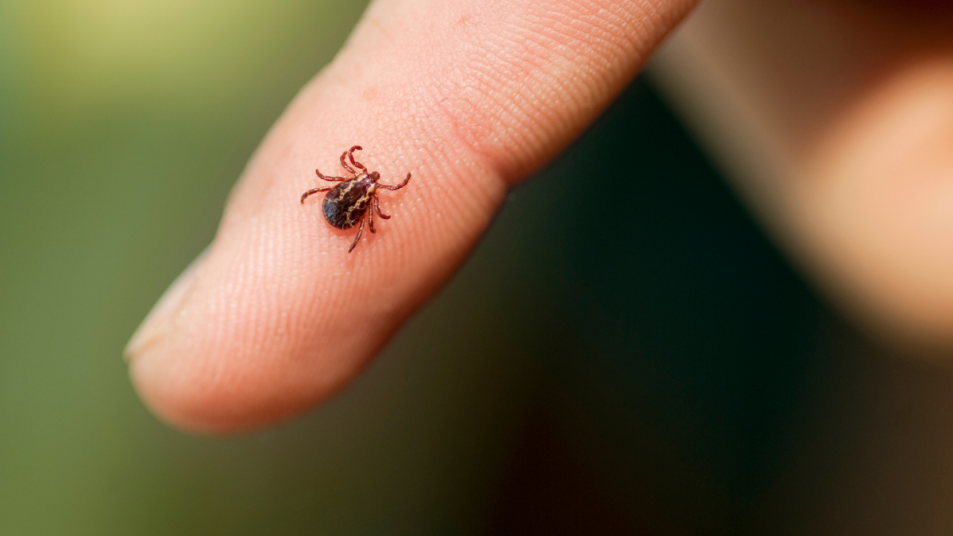This Summer’s Tick Season Is Worse Than Usual — Here Are 5 Common Tick Myths You Should Know

Summer is in full swing, and while this season brings all the outdoor fun we’ve been looking forward to, it also means it’s time to be extra aware of ticks. You’ve probably heard more than a few things about protecting yourself from these icky pests in the past, but this year it’s more important than ever to know fact from fiction.
Experts are saying there are already more ticks this year than last year, and it’s only going to get worse as the warmer months go on. Ticks are small bugs that eat the blood of animals, humans, and other creatures, and due to this, they also have the ability to transfer harmful bacteria (most commonly Lyme disease), viruses, and parasites that can wreak havoc on your health if not treated quickly enough. The problem, however, is that many people still believe outdated myths about ticks that keep them from being as safe as possible. Luckily, a few quick clarifications can make a big difference!
Myth #1: Ticks are only found in wooded areas.
I don’t know about you, but growing up I was taught that ticks were almost exclusively found in forests and similar wooded regions. While that’s partially true, it doesn’t mean you’re totally safe if you’re not in the woods! You can see them in urban city centers in addition to more typical suburban and rural areas, and they’re just as likely to pop up in your backyard as they are in forests. That means you can’t let your guard down.
Myth #2: A bullseye rash is the only surefire way to know you’ve been bitten.
Chances are you’ve seen photos of those big, red bullseye-shaped rashes that form from tick bites. However, here’s an interesting fact: Roughly 20 to 30 percent of tick bites don’t result in any bullseye rash but will instead include symptoms like muscle pain, fever, chills, swelling, stiffness, and headaches. In other words, just because you don’t see that very recognizable sign of a bite doesn’t mean you’re in the clear.
Myth #3: It’s not easy to remove a tick.
Removing a tick is actually pretty simple, but if you scour the internet, you’ll quickly find tips for removing them that include burning them off of your skin (ouch!), putting rubbing alcohol on them, and more. The only way to full remove a tick, however, is to use a pair of fine-tipped tweezers, and pluck it off as close to the head as possible. It can’t transfer viruses or bacteria without its full body, so don’t be scared if it take a few tries to get the tick’s head entirely off.
If you can, place the tick in a sealed container and put it in your freezer; your doctor might want to run tests on it later to see what illnesses it may have transferred to you.
Myth #4: Ticks mostly get on people and animals by falling out of trees.
Don’t think you’re protected from ticks just because you’ve got a hat on! Standing in taller grass and weeds can also make you more susceptible to bites. In fact, one study found that ticks were more likely to be found on your lower extremities like your legs and butt than your arms and chest. Make sure you’re covered with close-toed shoes, socks, and pants when you’re outside, especially if you’re spending extended periods of time outdoors.
Myth #5: You automatically have Lyme disease if you’re bitten by a tick.
Did you know that it typically takes 36 to 48 hours after a tick has attached itself to your skin for it to transmit Lyme disease-related bacteria? Another positive on this list! Additionally, many ticks are free of infection all, so you could very well get bitten by a tick and not get Lyme disease. However, some ticks may carry strains for other diseases that aren’t Lyme. So, no matter what, the sooner you get a tick off of you and get yourself to doctor to get checked out, the quicker you can figure out if you’re been infected by anything.
If you suspect you’ve been bitten by a tick, or you’ve removed one from your skin, call your doctor immediately to discuss your options. You may be treated with a round of antibiotics even if you don’t have symptoms as a precautionary measure, or there may be more in-depth tests you can take to see if you’ve contracted anything. Whatever you do though, don’t administer antibiotics on your own without medical approval and supervision; you may end up inadvertently making the situation worse.
Now that you know what to look for, just make sure to always check yourself and your family for ticks after a day out in nature. We wish you a fun and safe summer!












